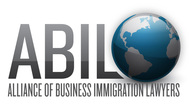Wolfsdorf Immigration Blog
The U.S. Department of State (“DOS”) continues to update the Foreign Affairs Manual (“FAM”) in numerous areas, including recent changes in guidance regarding eligibility for E-2 treaty investor visas.
Here are five changes to know:
1. Fifty Percent Rule. Applicable regulations require an alien employee of an E-2 treaty investor may work for an employer that is “at least 50% owned by persons having the nationality of the treaty country who are maintaining nonimmigrant treaty investor status if residing in the United States or, if not residing in the United States, who would be classifiable as treaty investors.” If there are multiple corporate layers of ownership, the FAM clarifies that adjudicating officers must look at the ownership of each business structure to determine whether the requisite 50% nationality of the treaty company exists.
2. Intent to Depart. The issuance of an E-2 nonimmigrant visa is based on an applicant’s intent to depart the United Sates upon termination of status. The FAM previously indicated that an E visa applicant may sell his or her foreign residence and move all household effects to the United States, but it now clarifies that an “[a]n applicant who is the beneficiary of an immigrant visa petition will need to satisfy … his/her intent is to depart the United States at the end of his/her authorized stay.” This guidance is a warning for those with pending immigrant visa petitions who seek to apply for a new E-2 visa at a U.S. consular post.
3. Source of Investment Funds. The FAM clarifies pre-existing adjudication trends regarding source of investment funds. The FAM states that the source of the investment “need not be outside the United States” and that it may not be the result of illicit activities. The guidance confirms that any investment funds obtained while working in the U.S. without authorized employment will be scrutinized.
4. Proportionality Test. The FAM states: “No set dollar figure constitutes a minimum amount of investment to be considered “substantial” for E-2 visa purposes.” Instead, a consular officer is supposed to weigh the amount of the qualifying funds invested against the cost of businesses. The FAM reads:
| If the two figures are the same, then the investor has invested 100 percent of the needed funds in the business; such an investment is substantial. The vast majority of cases involve lesser percentages. The proportionality test can best be understood as a sort of inverted sliding scale. The lower the cost of the business the higher a percentage of investment is required. On the other hand, a highly expensive business would require a lower percentage of qualifying investment. There are no bright line percentages that exist in order for an investment to be considered substantial. Thus, investments constituting 100 percent of the total cost would normally qualify for a business requiring a startup cost of $100,000, for example. At the other extreme, an investment of $10 million in a $100 million business may be considered substantial, based on the sheer magnitude of the investment itself. |
5. Investor’s Commitment. The FAM clarifies a consular officer’s responsibility to obtain “whatever documentation is needed to properly assess the nature and extent of commitment to a business venture.” It is advisable for applicants to include not only statistics from trade associations or a feasibility study, but also evidence of communication with local government offices or Chambers of Commerce. As always, unverified and unaudited financial statements are deemed insufficient and self-serving and will not assist a consular officer in determining the nature and status of an enterprise.
The recent FAM updates on the E-2 treaty investor visa coincides with a closing door on legal immigration options by the Trump Administration. Experienced immigration attorneys who understand general adjudication trends and specific U.S. consular post’s procedures are critical for the best chance of being issued an E-2 visa after making an investment in a U.S. enterprise.

 RSS Feed
RSS Feed
